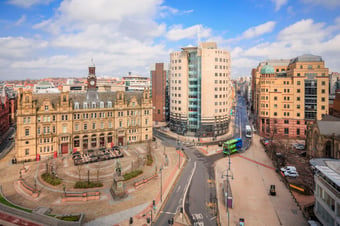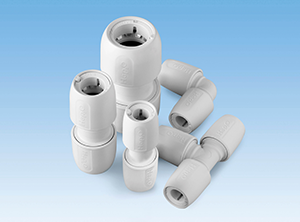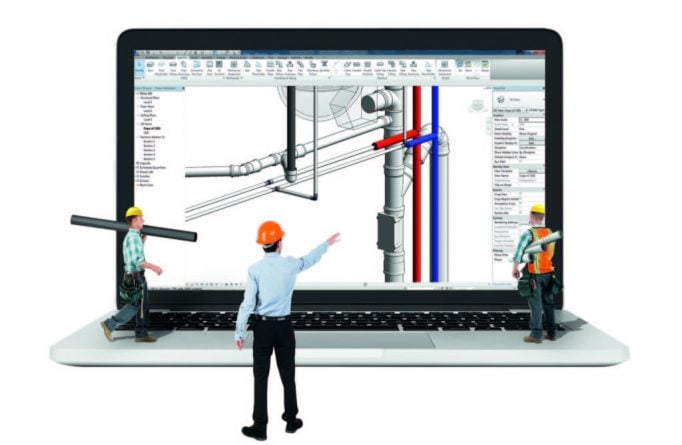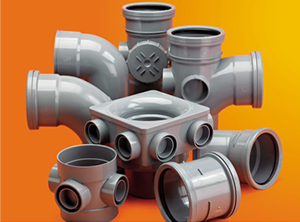World Health Day | Impact of Pandemics on Construction & Urban planning
We all hope that one of the positive and lasting legacies of this pandemic will be greener and more resilient cities that offers a better quality of life for those that live and work in them. In this post, we take a look at how pandemics of the past have shaped cities and the key ways that the current pandemic may impact our urban areas.
Pandemics of the past
The impact of disease and public health on city planning is nothing new! In 1800 the landscape of New York was transformed by repeated Cholera outbreaks. Central Park for example was designed by Olmsted and Calvert Vaux in the immediate aftermath of New York’s second cholera outbreak. The park was considered a success and Olmsted, whose child had died of Cholera went on to design more than 100 public parks and recreation grounds in Boston, Buffalo, Chicago and Detroit. Across Europe, the Cholera pandemic also had a marked impact on cities transforming Paris with tree-lined boulevards to allow more air and light into the city. Even back then, public health officials understood that disease could be caused by the rubbish, animal manure and human waste that flowed freely into water sources.
They referred to the stink of noxious gases emitted from organic matter as ‘miasma’ and advocated for better ventilation, drainage and sanitary practices to help prevent disease. One of the biggest impacts of the fear of Miasma was the construction of underground wastewater systems. In London in 1854, the Cholera epidemic took the life of 10,000 residents. Physician John Snow made the link between sewage contamination of drinking water, and by 1858, a modern sewage system was constructed. Long straight roads increased in popularity allowing for the installation of long drinking water and sewer pipes, paving also allowed for streets to be more easily cleaned.

Green space
Open space is not only important in reducing the transmission of disease but also has an important impact on the well-being and mental health of city inhabitants. The Covid pandemic and prolonged lockdowns in countries across the world have brought into focus the need for parks and open spaces in which people can exercise and get closer to nature
A report commissioned by the National Trust has shown a huge surge in people’s use of green spaces during the coronavirus pandemic and revealed the inequality of access to nature in many towns, cities, and neighbourhoods. They have written to the Prime Minister along with West Midlands Council, Sustrans, Create Streets and local council leaders to urge a £5.5 billion commitment to an urban green infrastructure fund to level up to access to urban green space as part of his “infrastructure revolution”.
Digital transformation and decentralisation
A new survey by Mckinsey has found that Covid-19 has speeded up the adoption of digital technology by several years and that many of these changes are here for the foreseeable future. Many organisations have shifted to remote-working models almost overnight. This step-change in remote adoption is now arguably substantial enough for businesses to reconsider current business models. London City Firms are already looking at plans for staff to return to offices this spring and summer, but it looks like the daily commute is going to look very different. Fewer people living and working in cities could make them healthier and happier and more cost-effective places to live and work.
An analysis by KPMG found the loss of commuter flow could range from over a tenth to under a third of commuter footfall pre-COVID, with Hemel Hempstead and Bracknell set to see up to 27.4% of office work performed from home. KPMG suggest that the remaining space on the high street, left by the fall in retailers, could be converted to social and recreation use, catering for the needs of the local population. Some towns and cities already have a strong cultural and recreation offering but others need to increase their offering to ensure they remain attractive as a location to live and visit. Locations will need to offer more to attract both companies and people to their area. Those that succeed will be likely to have a range of cultural assets as well as easy access to green space, which will serve to boost the quality of living in the area.
Barcelona Institute for Global Health describes several new urban models that could help to make cities healthier places to live. The compact city describes the concept of an area of high residential usage with mixed land uses allowing shorter travel distances and lower co2 emissions. Superblocks with their interiors closed to traffic could reduce air pollution, noise levels and heat island effects and increase green space and physical activity. The 15-minute city describes a place where school, entertainment and other activities can all be reached within a 15-minute walk from home. Car-free cities are also a possibility with Hamburg planning to go car-free by 2034 to help address the current climate crisis.
Transport networks
There have already been some key changes to transport in global cities as a result of Covid. Networks of temporary bike lanes have been opened across cities in response to Covid including Bogota, Mexico City, Vancouver, Calgary, Budapest, and Berlin. In the UK, £250m was allocated for local authorities to use immediately in road space reallocation such as pop-up cycle lanes, pavement widening and bus and cycle corridors. The UK secretary of state recognised this as a “once in a generation opportunity to deliver a lasting transformative change in how we make short journeys in our towns and cities”.
Plumbing and ventilation
Finally, the rapid and spread the dramatic impact of the Covid pandemic is likely to have implications on building construction including plumbing and ventilation systems for the future. A WHO report in 2003 identified wastewater plumbing systems as a transmission mode of virus-laden droplets within a building in relation to the SARS outbreak in Hong Kong. If the reduction of disease transmission becomes a key objective for buildings of the future, plumbing, heating and ventilation will require careful consideration. An article for the Lancet in March last year on the mitigating transmission of Covid -19 via wastewater plumbing systems recommended that steps should be taken to monitor and minimise the chance of water traps drying out. Perhaps innovation will continue to emerge for both plumbing and ventilation systems that minimise the transmission of disease.
There are likely to be many more far-reaching implications for our cities than we could imagine. Looking to the post-Covid era, the UK government has already coined the term ‘build back better in relation to the sustainable growth of the construction industry that they hope to stimulate. A positive outcome of the Covid pandemic for construction and planning would be more sustainable cities that are healthy and enjoyable to live and work in.
Wavin - Building Healthy Sustainable Environments
Together, we must create livable and lovable cities where we feel safe and at home. And that’s why every decision we make now is crucial to achieving urban resilience. Our four solution pillars outline the areas where Wavin can make a difference – with your collaboration – as like-minded customers, partners/alliances, stakeholders, and engaged citizens.
- Safe and efficient water supply
- Better sanitation and hygiene
- Climate-resilient cities
- Better building performance
We are all responsible for this planet. It is our home. Let’s make it future-proof. Together.





_96dpi_1024x1024px_E_NR-54960.jpg?width=1089&name=Purpose%20film%20Social%20Media%20Climate%20Resilient%20Cities%20version%201%20-%20Make%20Every%20Decision%20Count%20(Original%20file%20=%20PSD)_96dpi_1024x1024px_E_NR-54960.jpg)





